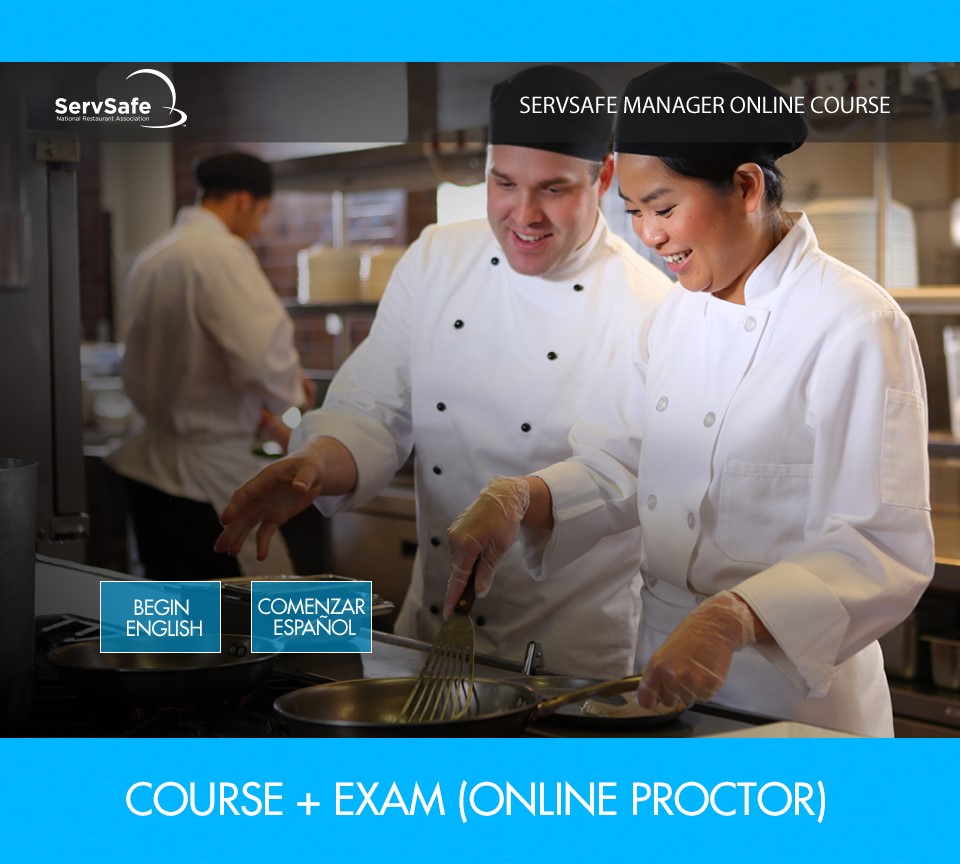Comprehensive Food Handlers Training for Hygiene and Safety And Security
In today's swiftly evolving food service landscape, detailed food handlers training has actually become an important part for making certain health and safety and security. By instilling vital practices connected to hand health, food storage space, and hygiene, this training not only alleviates the danger of foodborne illnesses but also reinforces conformity with regulative standards. The effects of such training expand past mere conformity; they touch upon public wellness and consumer trust. Yet, the effectiveness of these training programs can vary dramatically. What aspects genuinely determine their success in promoting a society of safety?
Significance of Food Safety And Security Training

Furthermore, food safety training assists to make certain that workers are conscious of present regulations and standards, which are crucial for keeping operational licenses and preventing expensive penalties. Routine training sessions likewise work as a system for reinforcing finest methods, thus lowering the chance of human error, which typically offers as a leading source of food contamination.
In addition, buying food safety training can boost an establishment's credibility, as consumers increasingly prioritize dining experiences that mirror high safety and security criteria. Such proactive measures not only protect consumers however additionally contribute to the lasting success of food businesses. In recap, thorough food safety and security training is an essential component of food service procedures, straight influencing both public health and service sustainability.
Key Concepts of Hygiene
Preserving high requirements of hygiene is essential in any kind of food taking care of environment to protect against contamination and make sure the security of consumers. The vital concepts of health include numerous crucial methods that food handlers have to consistently apply.
First, hand health is extremely important; food trainers should clean their hands thoroughly with soap and water before and after dealing with food, in addition to after making use of the toilet or touching any type of potentially infected surfaces. Secondly, devices and surface areas have to be regularly cleansed and sanitized to remove microorganisms. This includes utensils, reducing boards, and counter tops, which need to be maintained in a tidy problem.


Proper food storage space is additionally essential; raw foods need to be saved individually from cooked or ready-to-eat products to stay clear of cross-contamination. servsafe. Furthermore, keeping appropriate temperature level controls is crucial; perishable products should be maintained secure temperature levels to inhibit microbial growth
Lastly, individual hygiene can not be neglected. Food handlers must put on clean clothing, usage hair restraints, and stay clear of working when ill. By sticking to these key principles of health, food trainers can substantially minimize the risk of foodborne ailments and promote a more secure eating experience for all consumers.
Usual Foodborne Ailments
Although lots of foodborne health problems can be avoided via appropriate hygiene and safe food handling methods, they stay a considerable public health and read this wellness worry. Foodborne microorganisms can result in a variety of illnesses, ranging from moderate stomach distress to extreme issues and also death.
Usual foodborne illnesses consist of salmonellosis, triggered by Salmonella microorganisms, usually linked to undercooked fowl and eggs. One more widespread health problem is listeriosis, connected with unpasteurized dairy items and ready-to-eat meats, which can be specifically hazardous for immunocompromised people and expecting ladies. Norovirus, often acquired from infected food or surfaces, is recognized for its quick spread and capability to create break outs in public settings.
Escherichia coli (E. coli) infection, notably related to undercooked hamburger and polluted produce, can result in serious stomach aches and kidney failure sometimes. Furthermore, Clostridium perfringens, frequently found in large quantities of food that are poorly kept, can create gastrointestinal disorder with symptoms appearing shortly after intake.
Recognizing these diseases is vital for food trainers, as understanding can significantly decrease the risk of contamination and safeguard public wellness. Correct education and learning and training are important elements in combating look at here now foodborne illness.
Best Practices for Food Handling
Reliable food dealing with practices are essential in stopping the spread of foodborne diseases. Firstly, correct hand health is her response essential; food trainers should clean their hands extensively with soap and water prior to and after handling food, particularly raw meat or fowl - servsafe certifications. This basic activity significantly lowers the risk of cross-contamination
Second of all, keeping appropriate food storage temperatures is important. Consistently disinfect countertops, reducing boards, and tools, particularly after preparing raw foods. Usage separate cutting boards for ready-to-eat and raw foods to even more lessen contamination risks.
In addition, when preparing food, it is necessary to adhere to the principle of "very first in, first out" (FIFO) to handle inventory efficiently and decrease putridity. Always stick and check out to food item tags for risk-free cooking temperature levels and managing directions. By carrying out these finest techniques, food handlers can significantly enhance food safety and secure public health and wellness.
Carrying Out a Safety And Security Culture
Creating a security society within a food dealing with environment is essential for cultivating a commitment to food safety among all personnel. This culture highlights the value of food safety and security as a common responsibility, urging staff members to focus on hygiene practices continually.
To implement a safety and security society, companies must begin by giving detailed training that deals with food handling procedures, potential dangers, and the relevance of individual hygiene. Educating sessions ought to be interactive and customized to the details functions of personnel, making sure relevance and engagement.
Furthermore, management plays an essential role in establishing this culture. Management ought to design risk-free methods and interact the value of food security consistently. Acknowledging and awarding employees that copyright security standards can better strengthen these actions.
Furthermore, open interaction networks should be developed, allowing team to report safety and security concerns without concern of consequence. Regular safety and security audits and comments sessions can assist recognize areas for enhancement and enhance responsibility.
Ultimately, growing a safety culture not just enhances compliance with food safety and security policies but likewise shields public wellness, fosters employee morale, and adds to the total success of the food handling establishment.
Final Thought
Finally, detailed food trainers training plays a crucial duty in advertising health and safety and security within food solution facilities. By equipping workers with vital understanding regarding food safety and security concepts, common foodborne diseases, and finest practices for handling food, such training considerably minimizes health risks. Cultivating a culture of security enhances the establishment's online reputation and aligns with consumer assumptions for high safety and security requirements, ultimately contributing to public health and wellness protection and the total success of the food service sector.
In today's quickly evolving food solution landscape, thorough food handlers training has emerged as a crucial part for guaranteeing hygiene and safety and security.Food safety and security training is essential for keeping high requirements in food handling and prep work, with research studies showing that appropriate training can minimize foodborne illnesses by up to 30%. In recap, detailed food safety and security training is a vital aspect of food solution operations, straight influencing both public health and wellness and company sustainability.

Comments on “Browsing the Requirements for the ServSafe Alcohol Certification: What to Expect”